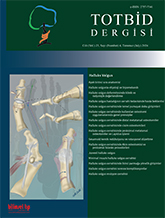
Hallux valgus is described as medial deviation of the first metatarsal bone and lateral deviation of the great toe with subluxation of the first tarso metatarsal joint. Corrective metatarsal osteotomies has always been regarded as the main operations in the treatment of this deformity. The preferred surgical procedure should also adress the instability of the first tarso metatarsal joint since this pathology plays a major role in the formation and recurrence of the deformity. Metatarsal osteotomies are classified as distal osteotomies, metatarsal shaft osteotomies and proximal osteotomies. In addition, Lapidus procedure, which defines correction of the metatarsal deformity at the first tarso metatarsal joint and fusion of this joint is usually presented with proximal metatarsal osteotomies. Common practice involves preference of proximal osteotomies in cases with high first intermetatarsal angle, since proximal location of the osteotomy increases the correction power in hallux valgus. Commonly used proximal osteotomies include crescentic osteotomy, Ludloff osteotomy, Mau osteotomy, proximal chevron osteotomy, and proximal open and closed wedge metatarsal osteotomies. Proximal rotational metatarsal osteotomy (PROMO) which has recently been described in order to correct the metatarsal pronation deformity effectively and Lapidus procedure which corrects the deformity from the first TMT joint and aims to fuse the related joint are also discussed in this chapter.